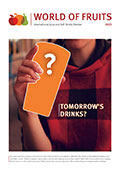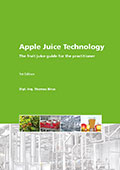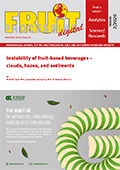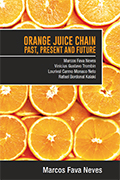In the U.S. the share of Gen Zers born between 1997 and 2002 who say they plan to drink less alcohol in 2024 jumped 53 % year over year. Sixty-one percent say they plan to cut back on their alcohol consumption, compared to 40 % who said they planned to drink less in 2023.
The findings are from the latest consumer sentiment survey about the sober curious movement, a follow-up to a similar survey conducted in January 2023. Both surveys were commissioned by NCSolutions (NCS). The findings also include an analysis of NCS’ proprietary consumer purchase data. NCS is the leading company for improving advertising effectiveness for the consumer packaged goods (CPG) ecosystem.
More millennials (born between 1981 and 1996) said they’d drink less in 2024 (49 %), an increase of 26 % from those surveyed a year before. Overall, 41 % of all Americans plan to drink less in 2024, up from 34 % the year before. Together, these findings indicate the sober curious movement gained strength over the last year, largely due to interest from younger generations.
“Nonalcoholic alternatives, once a niche category, are becoming more mainstream,” said Alan Miles, chief executive officer, NCSolutions. “Younger consumers are increasingly expressing a growing interest in healthier options for social drinking. Beverage brands have a real opportunity to engage and build brand loyalty with the next generation of consumers by focusing on the right combination of creative, product, placement and timing.”
Tap into Gen Z with sober curious lifestyle messages
Younger consumers say saving money and improving physical health are the top reasons they switch to a sober lifestyle. More than one-third (36 %) of Gen Z say they’re going alcohol-free for their mental health.
This impacts the type of advertising most likely to influence purchases: over one-third of Gen Zers (34 %) say they’re more likely to try a new beverage product if it’s aligned with the sober curious lifestyle, compared to 17 % of all Americans. The finding adds further nuance to the marketing preferences of Gen Z, who are known to have an affinity for brands whose missions align with their values.
Nearly half (45 %) of Gen Zers say social media is the most effective advertising channel to help them learn about new nonalcoholic beverage options, followed by internet searches (16 %) and streaming TV (15 %). In addition, nearly one in four (24 %) have tried a nonalcoholic beverage because a celebrity or influencer endorsed it.
Mocktails are twice as popular as nonalcoholic beer
Sober curious consumers surveyed are twice as likely to choose a mocktail than a nonalcoholic beer. One in five (19 %) Americans said they drank a mocktail in 2023, compared to one in 10 who drank nonalcoholic beer. More than one-third (37 %) said they drank mocktails most often.
Mocktails were especially popular among younger generations in 2023. Thirty-seven percent of Gen Z said they drank mocktails last year, compared to 16 % who said they had nonalcoholic beer and 10 % who said they drank nonalcoholic wine.
Among millennials, 30 % said they drank mocktails in 2023, compared to 15 % who drank nonalcoholic beer and 9 % who had nonalcoholic wine.
Seventeen percent of both millennials and Gen Z said they had tried THC and CBD-infused drinks in 2023.
December leads for nonalcoholic beverage sales
Interest in Dry and Damp January continues to expand. Consumers purchased the least amount of alcoholic beverages in January 2023 (down 24 % from December 2022) and August 2023 (down 10 % from July 2023), according to NCS purchase data. This follows a 19 % drop in January 2022 compared to December 2021.
December was the most popular month of the year to buy alcohol in 2023, followed by May and March. Month-over-month purchases of alcohol in December increased 16 % over November. This increase was two times higher than the 8 % month-over-month increase in December 2022 and rose 8 % in May, compared to April. By contrast, in 2022, the summer and winter holidays saw the highest increase in purchases of alcoholic beverages.
“Alcohol consumption is traditionally seasonal. Consumers purchase significantly more during December in preparation for the holidays,” Miles said. “In the past, we’ve seen alcohol sales rise during summer months, but now the peak is as early as May. Beverage brands have the opportunity to leverage the sober curious trend beyond January and into the summer months, targeting younger consumers with new summer-focused nonalcoholic products and health-oriented creative.”
Despite being digital natives, Gen Z consumers have started to exhibit some self-awareness and are questioning if all-encompassing tech usage is good for them. New Mintel research indicates that while 51 % of Gen Z Canadians (aged 13 – 17) cite a desire to integrate more tech into their lives, nearly the same percentage (47 %) also agree that social media and large amounts of tech usage have a negative impact on their mental health. In fact, 47 % say they are trying to limit their social media usage.
When examining the platforms that Gen Z uses, all of them rely heavily on visual interaction: Mintel research shows Gen Z Canadians engage with YouTube the most (77 %), followed by Instagram (75 %), Snapchat (58 %), and TikTok (52 %).
Michael Lloy, Senior Technology Analyst, Mintel Reports Canada, said: “Our research shows that due to significantly more time spent on these platforms, a portion of Gen Z has become more aware of their mental health and are exploring ways to reduce their usage of social media. This indicates that there is growing discontent among younger consumers about the negative effects that social media has on their lives, which may prompt radical behaviour shifts away from social media as they age. This will require brands to think strategically about how and where they market to Gen Z consumers as they age in order to develop and sustain an engaged and loyal audience.”
Reduced screen time in favor of better mental health
Gen Z consumers use of social media is a behavioural trait that sets them apart from other demographics. They are a heavily plugged-in generation with 51 % saying they are on the hunt to find technology to make their lives easier, more efficient, or more exciting. What’s more, 64 % say they engage with social media more than TV/movies.
However, nearly half of Gen Z (47 %) agree that social media has a net negative effect on their mental health and nearly all (95 %) agree that mental health is just as important to maintain as physical health.
“Gen Z reducing their screen time due to mental health concerns presents an opportunity for brands to lean into the visibility of their values in order to be seen to support causes that Gen Z cares about. Both Millennials and Gen Zs are heavily plugged-in generations, but there are a few, notable differences when it comes to social media. First, while Gen Zs are digital natives, most Millennials are not, and this informs the speed at which each generation adapts to new technology. Life stages are another piece of the puzzle. Millennials are a split generation. Some Older Millennials are married, homeowners, have children, or some combination of the three, while some Younger Millennials are closer to Gen Z in their life stages. These key differences will be important for brands to remember as they market to Gen Z consumers moving forward.”
The metaverse fails to make an impact
Since its launch in late 2021, the metaverse has been a popular topic for brands but has made less of a splash among consumers. Mintel research shows only 3 % of Canadian Gen Z consumers actually use the metaverse and 26 % have never heard of the metaverse before now.
“As many Canadian consumers are getting back to their pre-pandemic lifestyles, including in-person gatherings, the lack of eagerness to interact with the metaverse has been evident. Overall, only 15 % of consumers, on average, can even envision a world where they interact using the technology, meaning brands that currently or plan to leverage the metaverse in their marketing strategy have some work in front of them in order to convince consumers of the metaverse’s usefulness and applicability to their daily lives,” concluded Lloy.
In times of instability, crisis and major global events, how do we make sense of trends which are likely to influence the beverage market?
While it is too early to predict the full impact of the conflict in Ukraine, when considering the trends within the beverage industry, it is important to take the macro drivers influencing the global economy into consideration.
Even before the latest current events, the global economy continues to be in a state of flux with recovery moving at varying speeds across regions and nations because of the pandemic.
In a report published in 2021, PwC reported that by the end of 2021, early 2022, they expect the global economy to revert to its pre-pandemic level of output. Noting however, that the recovery will be uneven across sectors, countries, and income levels.
As 2022 gets well underway, and the world pivots from pandemic to recovery, consumer behaviour and purchasing power remain highly dependent on economic realities, and perhaps now more than ever, understanding some of the key factors impacting the economic landscape is crucial for business strategy.
In its report „5 economic factors influencing the global beverage market“ Treatt takes a closer look at:
- Economic recovery post Covid-19
- Public debt levels
- Globalisation
- Higher value-add activities
- Generation Z
Please download the full report as pdf-file under: www.treatt.com
Avoidance of alcohol is becoming the norm for a growing minority of consumers around the world. While this trend is seen across all age groups, it is most apparent in Generation Z, with as many as a third of consumers aged 18 – 25 now saying that they never consume alcohol.
This trend is creating an entirely new sub-category within the alcoholic drinks market. Younger consumers appear reluctant to turn their backs on either the taste or sophistication of beer, wine and spirits in favour of traditional soft drinks. As a result, alcohol-free choices are flooding the shelves.
According to a new report from Innova Market Insights, four percent of all the beers and spirits launched globally in 2021 contained no alcohol at all, rising to seven percent among flavoured alcoholic beverages (FABs). Launch numbers in each of these areas have grown at CAGRs of 20 – 40 % over the past five years.
Alcohol removal is also becoming far more mainstream. “The big guns are all invested in the alcohol-free movement,” reports Lu Ann Williams, Global Insights Director at Innova Market Insights. “Brands such as Guinness 0.0 alcohol free stout and Freixenet 0.0 sparkling rosé wine offer both familiarity and novelty to young, brand-conscious drinkers.”
It is not all about a ‘no alcohol’ positioning, however, as launches of low-alcohol drinks such as hard seltzers are growing twice as fast. The soft drinks giants have even been exploring this area in partnership with alcohol companies. For example, Coca-Cola (with Molson Coors) already offers the Topo Chico hard seltzers brand, while PepsiCo (with the Boston Beer Co) is ready to roll out Hard Mtn Dew in early 2022. PepsiCo has also applied for a trademark that suggests an alcoholic version of Rockstar could be on the cards.
Whether it is in alcohol reduction or its complete removal, the industry is recognizing that alcohol-shy youngsters are the target audience of tomorrow. Adjusting to their needs is a major focus for right now.
Millennials have had their time in the spotlight; now, companies are looking to the next generation to see how they will impact the future of the food and drink industry. Generation Z*, who are also known as the iGeneration, has the potential to reset expectations for health and wellness, increase the reach of international cuisine and heighten creativity in the kitchen, according to the latest research from Mintel. Mintel reveals how the diverse and tech-savvy Generation Z is set to transform food and beverage formulation in the coming years.
Head start on a healthy lifestyle
Regardless of age, sugar is at the top of parents’ watchlists when it comes to what their kids eat and drink. In fact, 60 % of parents with kids aged 12-17 and 55 % of parents with kids aged 18+ in the household report saying “no” to their kids’ food and drink choices based on sugar content. But while sugar is a key concern for parents, just 11 % of US food and drink launches aimed at children (ages 5-12) from June 2017-May 2018 had low, no or reduced sugar claims, according to Mintel Global New Products Database (GNPD).
With parents on the lookout, America’s youngest consumers are increasingly growing health-conscious themselves. In fact, one quarter (25 %) of teens aged 15-17 say they worry about staying healthy, with another 49 % agreeing that they think drinking soda is unhealthy.
“Generation Z has come of age at a time when health and wellness is a major consideration. Many younger members of Generation Z follow their parents’ healthy ways and it seems health-consciousness only gets stronger as they approach adulthood. However, health is multi-faceted for this group, suggesting that better-for-you formulations, such as craveable fruits and vegetables, can be expanded to give this generation options that fit with their ever-changing diet priorities,” said Dana Macke, Associate Director, Lifestyles and Leisure Reports, at Mintel.
Gen Z goes international
Today’s younger generations are the most diverse in US history and in addition to their varied racial and ethnic backgrounds, parents are raising their children to have broader palates. Gen Z seems to be cultivating an appreciation for international cuisine from a young age as 36 % of US parents of children under age 18 agree that their kids enjoy eating international foods.
Interest in international cuisine goes well beyond the more commonplace varieties such as Italian, Mexican and Chinese as Gen Z consumers are driving consumption of more emerging international food and drink. In addition to interest in eating at international restaurants such as Indian (36 %), Middle Eastern (38 %) or African (27 %), adult Gen Z consumers are also much more likely than other generations to find culinary inspiration from social media: 62 % of young adults aged 18-22 say they cook international cuisines at home from social media, compared to 46 % of Millennials (aged 23-40) and 23 % of Generation X consumers (aged 41-52) who cook at home.
“Generation Z is America’s most diverse generation yet. With exposure to international foods starting at an early age, whether in restaurants or at home, Generation Z is more likely to be open to the latest international food trend or innovative fusion creation. These adventurous habits are creating opportunities across categories, presenting potential for products such as tikka masala meal kits or Chinese Peking duck-flavored potato chips. While restaurants remain the most common points of discovery for international cuisine, younger consumers’ exposure to a range of cuisine types creates opportunities for brands to offer more authentic and hybrid flavors,” said Jenny Zegler, Associate Director, Mintel Food & Drink.
Digitally native upbringing leads to DIY mentality
Raised in an era where consumers have access to information at their fingertips 24/7, younger generations have grown up with the ability to thoroughly research their hobbies and interests, resulting in 80 % of Gen Z consumers under age 18 saying their hobbies/interests are just as important as their school work. What’s more, 36 % of consumers aged 10-17 and 31 % of those aged 18-22 believe that being creative is an important factor to being successful as an adult. This highlights an opportunity for food and drink brands to offer do-it-yourself experiences that help tweens, teens and young adults be creative and, eventually, confident in the kitchen.
“The wide range of food media, whether MasterChef Junior or YouTube videos, has piqued an interest in food and drink among some members of Generation Z. This younger generation’s easy access to technology and interest in being creative presents an opening for interactive products that encourage Gen Z to safely experiment and extend their passion for food and drink, such as chips that allow consumers to make their own flavor or kits to make more complex recipes or international meals at home,” concluded Zegler.
*Aged 11-23 in 2018
Fermentation, a practice stretching back more than 10,000 years of human history, employs beneficial microorganisms for enriching and preserving food ingredients. It remains firmly rooted in Asian and African cultures as a tradition passed down from generations. Consequently, fermented foods like Kimchi remain a staple in Korean cuisine, and cultured drinks like Kombucha and Lassi have an unabated following among Chinese and Indian consumers, respectively, says leading data and analytics company GlobalData.
On the other hand, fermented foods have largely been sidelined in Western diets partly due to the hyper-hygienic lifestyles, and the high affinity for processed, canned and pasteurized convenience-foods. This scenario is changing as fermentation once again comes under the spotlight in the West through the rising popularity of exotic Eastern foods and beverages like Kimchi, Kombucha and Kefir.
Health benefits: Bobby Verghese, Consumer Markets Analyst at GlobalData says, “Growing consumer awareness about the link between ‘gut health’ and overall health and wellness is a major factor driving the renewed focus on fermented foods.” Natural preservation techniques like fermentation are gaining ground in the backdrop of the ongoing shift of consumers from processed foods to ‘cleaner-label’ foods with less chemical preservatives. This is underscored by GlobalData Global Consumer Survey 2017 findings which reveal that 75 % of global consumers somewhat or completely agree with the statement that ‘artificial additives and preservatives are harmful to their health’.
Novel sensory experience: Fermented food and drinks offer novel taste and texture sensations which particularly appeal to youthful consumers who are on the lookout for emerging exotic and international cuisines. This reflects in the GlobalData Global Consumer Survey findings which states that 49 % of Millennial and Gen Z consumers like to experiment with new and unusual flavors while choosing food products.
Economic and sustainability aspects: Fermentation processes offer a cost-effective, energy-efficient, and zero-maintenance technology for food preservation. This technique enables efficient utilization of available resources by prolonging the shelf-life of perishable seasonal produce, upcycling food waste, and detoxifying raw materials. Consequently, fermentation holds the potential to make a substantial positive impact on global food wastage and food security.
Manufacturers can leverage fermentation to tap into the growing demand for healthier foods and drinks. For instance, in late 2016, Pepsi acquired branded Kombucha manufacturer, KeVita, to provide an additional option to consumers seeking a healthier alternative to sugary sodas. Fermentation also offers fish and meat producers a potent method for attaining clean label certification for their products without using harmful synthetic preservatives. The growing popularity of fermented foods implies the need for innovative and creative packaging formats that preserve the integrity of the live probiotic culture in the foodstuff, without sacrificing the convenience and aesthetics aspects. In addition, fermentation is making a mark on the cosmetics industry, where manufacturers are vying to develop natural and ‘clean’ beauty and personal care products that are as effective as synthetic formulations.









